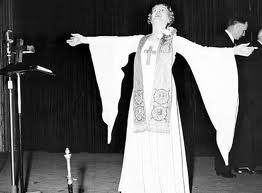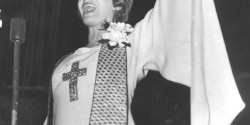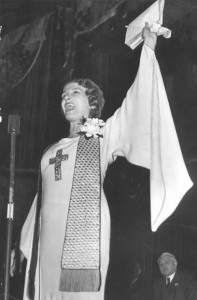I cannot predict which of the thousands of applicants for Low Power FM radio stations will win frequencies from the Federal Communications Commission next year, but of one thing I am sure. Many of the winners will be churches, especially in the south and southwest. You do not have to be a spiritual psychic to figure this out. Just look at the FCC’s list of mutually exclusive LPFM applications and it is obvious. Take, for example, the list of filers for a single Houston, Texas area LPFM signal:
Betesda Iglesia Hispana International
Bread Of Life, Inc.
Centro Cristiano Mundial Fe Y Amor Inc.
Fundacion Arte Catolico Christiano
His Sanctuary Ministries Usa International, Inc.
Iglesia Mundial De Oracion Inc
Ntd Public Media
Nueva Jerusalen Church
Positive Broadcasting Company
No big surprise here; although religiosity is declining in the United States as elsewhere, sixty percent of the population of the USA still tell pollsters they are devout in some manner. It is my hope, however, that the spiritual organizations that get these licenses take their inspiration from the great Pentecostal broadcaster of the 1920s, Aimee Semple McPherson.
Born in Ontario, Canada, by the early 1920s McPherson’s Angelus Temple in Los Angeles could seat over 5,000 people and was usually packed. In 1923, McPherson became the first woman to receive a radio license from the Department of Commerce. It had 500 Watts of Power and could be heard as far as Hawaii. McPherson described the construction of the Angelus studio and transmitter towers to her audience. She had a way with words:
“On February 6, 1924, that sanctuary of devotion lifted two arms Heavenward, pointing upward, ever upward, to the Lord. Two hundred and fifty feet above the ground they stretch. In their hands they hold four throbbing cables—the antenna of KFSG, Radio Broadcast Station. Those four cables are the whispering harp strings of Angelus Temple, home of the Four Square Gospel. Those two arms, as if in supplication, tower in the sunlight gleaming shafts of white against an azure sky. Illuminated at night by huge floodlights, they glow with silvery radiance like vast tapers, ever burning, ever pointing starward.”
As the religious broadcast historian Tona J. Hangen observes, McPherson took pains to replicate the sound and themes of mainstream radio. “If programs such as the Eveready Hour were shaping the way Americans perceived themselves,” she writes, “reflecting back into the homes of urban immigrants aural images of bucolic rural life and classless, unified ‘American’ national identity, KFSG programming in the twenties stressed divine power available to anyone regardless of wealth and circumstances . . . ” The station went so far as to create its own dramatic radio series with titles like The Red Comet and The Adventures of Jim Trask—Lone Evangelist.
Aimee Semple McPherson was a source of personal controversy and gossip. In 1926 she famously disappeared on a beach in Ocean Park, California, and reappeared on an Arizona desert. Foes and even friends suspected a tryst with a former radio engineer. The newspapers had a field day with the scandal. McPherson was undeterred by the incident. “She played on the public’s curiousity about her private life by peppering her sermons with personal details and fulfilling cultural expectations about how celebrities dressed and traveled in style,” Hangen notes.
 When in 1927 Secretary of Commerce Herbert Hoover asked McPherson to keep KFSG on its own frequency and not occupy others, she ignored his request. When his engineers “sealed up her station and stopped it,” as Hoover later put it (page 142 pdf), she responded with a telegram famous among broadcast historians:
When in 1927 Secretary of Commerce Herbert Hoover asked McPherson to keep KFSG on its own frequency and not occupy others, she ignored his request. When his engineers “sealed up her station and stopped it,” as Hoover later put it (page 142 pdf), she responded with a telegram famous among broadcast historians:
“PLEASE ORDER YOUR MINIONS OF SATAN TO LEAVE MY STATION ALONE STOP YOU CANNOT EXPECT THE ALMIGHTY TO ABIDE BY YOUR WAVE LENGTH NONSENSE STOP WHEN I OFFER MY PRAYERS TO HIM I MUST FIT INTO HIS WAVE RECEPTION OPEN THIS STATION AT ONCE.”
I do hope that from the next wave of Low Power FM stations comes at least one Aimee Semple McPherson; maybe even two. In the meantime, Happy Holidays and New Year to all our Radio Survivor readers.
LPFM Watch is a weekly feature on Radio Survivor every Thursday.




